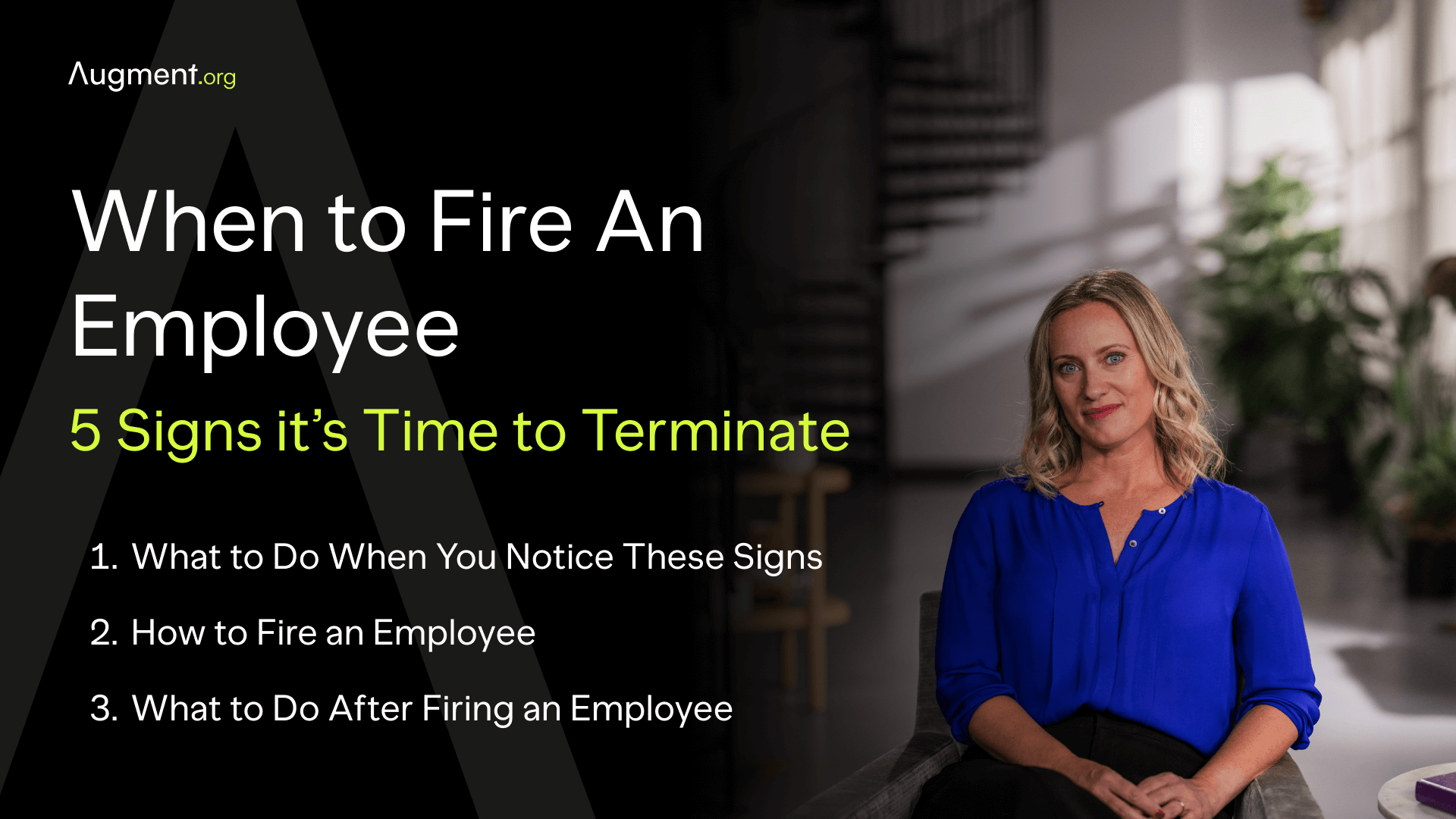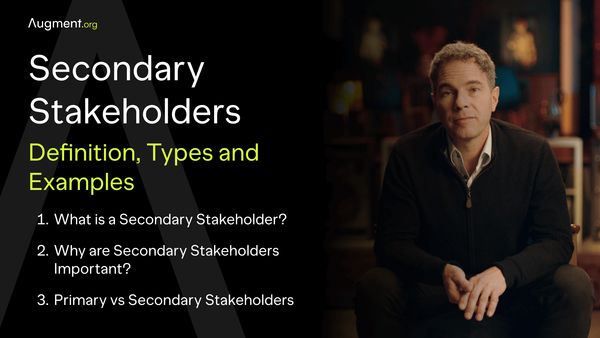When to Fire an Employee: 5 Signs it’s Time to Terminate
Deciding when to fire an employee requires careful consideration and a clear understanding of how their actions impact the team and company culture.

5 Signs it's Time to Fire an Employee
Making the decision to fire employees is never easy, but recognizing the signs early can safeguard your company's culture and employee morale. Key indicators often include:
- Persistent Poor Performance: Consistently underperforming employees, despite efforts such as performance improvement plans, can hinder team productivity. It's crucial to evaluate if their poor quality of work persists over time.
- Violation of Company Policies: Employees who repeatedly disregard company policies pose a risk to the organization. This includes serious infractions like substance abuse, sexual harassment, or theft of company property.
- Negative Impact on Other Employees: An individual whose actions consistently demoralize or negatively affect co-workers can disrupt the entire team's dynamics. Watch for signs of office drama or declining morale among team members.
- Ethical or Legal Issues: Engaging in illegal activities or serious ethical violations, like fraud or embezzlement, demands immediate action to protect your business and adhere to state laws.
- Unresolvable Attitude Problems: Sometimes, it's not just about performance. An employee with a chronically negative attitude or who disrespects colleagues and managers can erode company culture.
While each situation requires careful consideration and respect for the individual circumstances, acknowledging these signs early in the decision-making process can guide you towards the right course of action for your company and the other employees involved.
What to Do When You Notice These Signs
When you notice the warning signs that an employee may need to be terminated, acting proactively and thoughtfully is crucial. Here’s how to handle the situation:
- Consult with HR: Before making any decisions, involve your HR representative. They can provide guidance on company policies and ensure that any actions taken comply with legal standards, minimizing the risk of wrongful termination issues.
- Document Everything: Keep detailed records of the employee’s performance issues, policy violations, and any other relevant incidents. This documentation is vital if a decision to terminate is made.
- Performance Improvement Plan (PIP): If the issues are performance-related, consider implementing a Performance Improvement Plan. This gives the underperforming employee a chance to improve and clearly outlines the expectations and consequences.
- Seek Input from Trusted Colleagues: Sometimes, it helps to get a second opinion. Discuss the situation with a trusted team member or managers to gain a broader perspective and ensure you're not missing any crucial information.
- Assess the Impact on the Team and Company: Consider how the employee’s actions affect their co-workers and the overall business. Are they disrupting the workflow, negatively impacting team morale, or causing issues in the supply chain?
- Evaluate Alternatives: Sometimes, reassigning the employee to a different role or providing additional training might resolve the issue. Explore all possible solutions before deciding to fire.
- Prepare for the Next Steps: If termination seems inevitable, start planning for the aftermath. This includes considering how you will redistribute the employee's workload and how to communicate the change to your team.
Remember, every employee and situation is unique. It's essential to treat each case with careful consideration, respect, and sensitivity, keeping the best interests of both the individual and the company in mind.
How to Fire an Employee
Firing an employee is a sensitive matter that requires a thoughtful approach. Here’s a guideline on how to conduct a termination in a respectful and professional manner:
- Plan the Meeting: Schedule a termination meeting in a private location to maintain the dignity of the employee. It’s typically best to conduct this at the end of the workday to minimize disruption and maintain privacy.
- Involve HR: Have a human resources representative present during the meeting. They can provide support, ensure that the process adheres to company policies, and assist in addressing any legal concerns.
- Be Clear and Concise: During the meeting, be straightforward about the decision. Avoid lengthy explanations or debates. Clearly state that the decision is final, based on specific reasons aligned with company policies or performance issues.
- Handle Logistics: Discuss practical matters such as the return of company property, final paycheck details, and any benefits like COBRA insurance. Provide written documentation outlining these details for clarity.
- Offer Support: If possible, provide resources to aid the terminated employee in their transition, such as job search assistance or a reference letter, depending on the circumstances of the termination.
- Maintain Professionalism and Empathy: Deliver the news with respect and empathy. Remember, it’s a difficult message, and how it’s conveyed can significantly impact the employee’s experience.
- Prepare for the Response: Be prepared for various emotional responses and handle them with patience and understanding. It’s essential to remain calm and professional throughout.
- Communicate with the Team: After the termination, appropriately inform your team about the change. Ensure this communication respects the privacy of the terminated employee and focuses on moving forward.
Remember, firing an employee is a challenging part of being an employer or manager. Handling the process with care and respect is crucial for the well-being of both the terminated employee and the remaining team members.
What to Do After Firing an Employee
After the difficult decision to terminate an employee, there are several steps that should be taken to ensure a smooth transition for your team and organization:
- Manage the Departure: Ensure the terminated employee returns all company property. This might include keys, devices, or any sensitive material. Handle this process with respect and professionalism.
- Communicate with Your Team: Address the termination with the remaining employees in a manner that is respectful to all parties involved. It's essential to maintain privacy and not disclose specifics. Focus on the future and reassure your team about their job security and the company's direction.
- Review and Redistribute Workload: Assess the workload of the terminated employee and plan how to redistribute these responsibilities. Consider whether a new hire is needed or if current team members can absorb the tasks.
- Learn from the Experience: Reflect on the situation that led to the termination. Was there a gap in supervision, training, or hiring processes? Understanding the root causes can help prevent similar issues in the future.
- Support Remaining Employees: Terminations can impact team morale. Offer support to your team members, encourage open communication, and address any concerns they might have.
- Update Documentation: Make sure all records are updated to reflect the termination. This includes employment records, access systems, and any internal directories.
- Stay Informed about Legal Obligations: Be aware of any legal requirements following the termination, such as final paychecks, benefits information, or unemployment claims.
- Focus on Moving Forward: It’s important to look ahead and focus on the continued growth and productivity of your team and business. Use this as an opportunity to reinforce your company's values and goals.
Handling post-termination activities with care and professionalism is crucial for maintaining a positive work environment and ensuring your business continues to operate smoothly.



